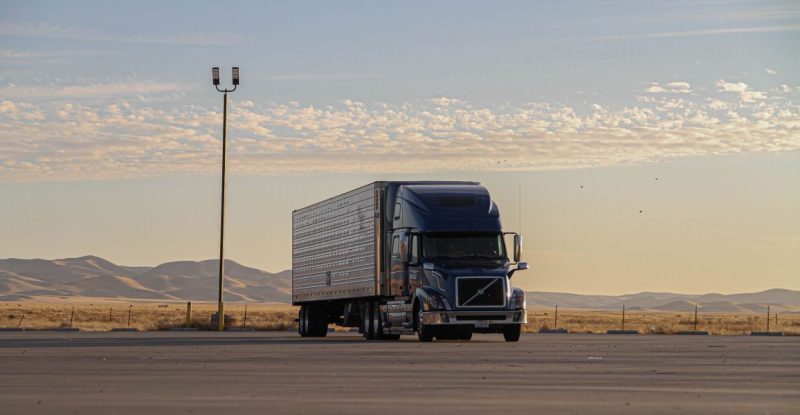The Most Common Challenges in the Freight and Transportation Industry

Categories :
The freight and transportation sector is a vital global player, facilitating the global movement of goods and people. Despite its rapid growth and the projected value of $11.1 trillion by 2030, it wrestles with numerous challenges that can profoundly impact its operational efficiency and effectiveness.
This article will delve into the prevailing challenges experienced in the freight and transportation sector, covering a broad spectrum of issues, including logistics, regulatory adherence, technological advancements, and environmental concerns.
Freight and Fleet Management
Fleet and freight management represent critical aspects of the transportation industry, and they come with their own set of challenges. Effective freight and fleet management requires meticulous planning, coordination, and optimization of resources, including vehicles and drivers.
Some of the primary difficulties in this area are optimizing routes to minimize transportation costs, reducing fuel consumption, and enhancing overall efficiency. Fleet managers must grapple with the complexities of route planning, considering factors such as traffic conditions, delivery schedules, and vehicle capacities, to ensure timely deliveries and cost-effective operations.
Moreover, the maintenance and management of a vehicle fleet present a substantial challenge, encompassing routine upkeep, repairs, and adherence to regulations. These costs can significantly affect a company's financial performance and overall efficiency. Furthermore, the monitoring of vehicle performance, driver conduct, and safety compliance introduces intricacies to fleet management, necessitating continual endeavors to improve efficiency and safety within the transportation sector.
Infrastructure and Congestion
An urgent challenge within the freight and transportation sector relates to infrastructure and congestion. Outdated and insufficient infrastructure can result in delays, higher maintenance expenses, and an elevated accident risk. Roads, bridges, ports, and rail systems require ongoing updates and expansions to meet the rising demand for transportation services.
Moreover, urban congestion in major cities is a significant concern. Traffic congestion not only results in delays but also amplifies fuel consumption and air pollution. The strain on existing infrastructure and congestion problems is a constant battle for the industry, which relies on the authorities’ substantial investments in modernization and expansion.
Regulatory Compliance and Safety
The freight and transportation sector is subject to a multitude of regulations designed to ensure safety, environmental stewardship, and fair competition. Adhering to these regulations is imperative but often cumbersome. Transportation companies must navigate an intricate framework of rules covering aspects like hours of service, vehicle emissions, cargo security, and weight restrictions. Non-compliance can lead to substantial fines, harm a company's reputation, and even result in legal consequences.
Furthermore, safety is a paramount concern within the industry. The transportation of goods and passengers must be executed with the utmost diligence to avert accidents and safeguard lives. Accidents can be triggered by factors such as driver fatigue, vehicle maintenance issues, or inadequate training. To mitigate these risks, companies must allocate resources to safety measures, training, and maintenance.
Labor Shortages
The freight and transportation sector grapples with a significant hurdle, namely, the scarcity of skilled labor. This shortage impacts a spectrum of roles in the industry, spanning from truck drivers to logistics professionals. While the demand for transportation services continues to surge, there is a limited pool of qualified personnel to satisfy this growing need.
Notably, truck driver shortages have persisted as a longstanding issue. The demands of the job, involving extended hours on the road and prolonged periods away from home, can dissuade potential candidates. In response to this challenge, the industry needs to invest in recruitment and retention strategies, provide competitive compensation, and explore automation and other technological solutions to alleviate the strain on the workforce.
Technological Advancements and Integration
The rapid pace of recent technological advancements has ushered in both prospects and challenges within the freight and transportation sector. Technology, while holding the potential to augment efficiency, also demands adaptation and financial investment. The integration of technologies such as GPS tracking, Internet of Things (IoT) sensors, and autonomous vehicles has the potential to revolutionize the industry.
Nonetheless, the integration of these technologies into existing operations can be intricate and financially burdensome. This calls for companies to allocate resources to acquire new hardware and software, facilitate employee training, and ensure the safeguarding of data privacy and security. Furthermore, the implementation of autonomous vehicles raises inquiries regarding their effects on employment and safety, necessitating thorough consideration and regulation.
Environmental Sustainability
The freight and transportation sector is under growing pressure to minimize its environmental footprint. The combustion of fossil fuels for transportation is a notable source of air pollution and greenhouse gas emissions, significantly contributing to climate change. Numerous nations are imposing more stringent emissions regulations and advocating the shift toward cleaner and more sustainable transportation solutions.
The adoption of environmentally conscious practices is not solely a matter of ethical responsibility but also a fundamental business requirement. Businesses that disregard carbon emissions reduction may face regulatory penalties and damage to their reputation. To confront these environmental challenges and play a part in fostering a cleaner planet, the industry must invest in alternative fuels, electric vehicles, and other sustainable approaches.
Bottom Line
The freight and transportation sector, essential to the global economy, grapples with typical issues, including infrastructure concerns, congestion, regulatory compliance, labor shortages, technological advancements, and sustainability. Overcoming these hurdles demands a multifaceted approach, including infrastructure investments, safety measures, workforce development, tech integration, and sustainability initiatives.
To excel in this evolving field, companies must adapt and proactively address challenges. Embracing innovation, keeping up with regulations, and adopting sustainable practices are key to thriving. As the global economy evolves, the industry's ability to adapt remains pivotal for sustained success.
Citiesabc was created by a team of global industry leaders, academics and experts to create new solutions, resources, rankings and connections for the world’s top cities and populations.










